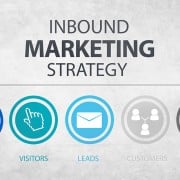5 Lame Excuses to NOT do Inbound Marketing
When it comes to excuses from the sales team about inbound marketing, we’ve heard them all. If you have people on your team that say they want to attract leads and increase conversion rates but don’t want to do inbound marketing, these lame excuses may already be familiar to you.
1. We’re a B2B business with a long, complex sales cycle.
Waaah. Your sales cycle is too long to bother with inbound marketing. You have a sales strategy as difficult to comprehend as Latin, and yet…it’s not working.
This is a common complaint, but it’s not a good one. You want to feel like you’re validated in saying your sales cycle is long and complex, and yet a very simple strategy involving inbound marketing could still help you realize better revenues.
How buyers buy has changed, yes, even for B2B. According to Forrester, 70% of buy cycle is complete before sales engages (2011). Now, people find you online and do research online first. The marketing cycle is longer and more information is consumed before your prospect ever talks to sales.
Two things to consider:
1. Without an inbound marketing strategy, you’re using your highest cost resources to acquire and move prospects through the sales process from start to finish. With a solid inbound marketing strategy, you shift some of that burden to less costly resources such as email marketing, lower costs on tradeshows and more expensive forms of lead generation, and free up your sales reps to focus on what they do best, close more business.
2. If you’re like many companies we talk to, you’re working off of referrals and tradeshows. You want to grow but the number of leads you get from these sources aren’t growing at all, or more slowly than you’d like. Shifting some of your marketing funds to an inbound marketing strategy allows you to generate more leads. If growth isn’t part of your strategy, then it isn’t important. If it is, you need to move beyond your current tactics..
2. My prospects are not on social media.
If you don’t mind ignoring the second largest search engine (YouTube), or the fact that Google continues to leverage its social networking platform to greater and greater advantages in search results, you can use this one as an excuse (not!). But even if your customers aren’t on social media, they’re still searching. And your activity on social media will show up in those search results — if you’re there.
Sometimes this excuse isn’t even true. If you yourself don’t see the value in social media, you might assume your prospects aren’t hanging out on Facebook or Twitter. But have you conducted research to prove it? Without concrete evidence that your buyers completely ignore all things social, your argument just doesn’t work. There is nothing like watching the face of a CEO who just finished telling me their customers and prospect aren’t on Twitter when I show him the screenshots of his brand being mentioned on Twitter. Yeah, that pretty much seals the deal right there. Don’t assume.
With changes to Google search algorithm moving more towards authorship and social shares, the content you publish and how widely it gets read and shared will be a driving factor in where you rank in the search engines. What that means for you is it’s not just your prospects you need to worry about being on social media anymore – it’s all industry related associations, organizations, and yes, competitors. If industry-related organizations are on social media, you can’t afford not to be.
3. It costs too much money.
Everything costs too much money! There’s never been a company who was excited to invest money in anything “marketing” related. Ever. But consider your ROI. If you invest $100,000 into inbound marketing, but it nets you $2,000,000 in sales, wasn’t it worth it? And if that same original investment then continues to generate new sales year after year, isn’t that better than paying salespeople to continually beat a dead lead? Or, continuing to pay for PPC every month? Or, investing in the tradeshow year after year?
This isn’t to say you shouldn’t closely be tracking your sales and marketing spend. You should. Watch your analytics to see where the most traffic to your site is coming from, as well as what percent of it converts to a sale. Keep copious records in your CRM so you can assess how much time your sales staff is investing in each lead, and see where you should focus your marketing spend. The beauty of inbound marketing is that it provides you a wealth of data that helps you continue to optimize and improve your marketing and sales.
4. We get good results with Pay-Per-Click ads.
Congratulations. And yet, if all your eggs are in this basket, it will eventually yield less amazing results. The amount you’re currently paying per keyword for a Google ad will rise as competition increases. You’d do better to work on your content marketing strategy to find your own way to the top of search results without paying for a click.
Studies show that organic search results get more links than paid search results – to the tune of 94% to 6%. And of that, it’s the top three links in organic results that get the most clicks. Now, if that doesn’t show you what you’re missing by improving your organic search results with inbound marketing, nothing will.
Also, what constitutes “good results” to you? What are you spending for a click versus what you paid to design your B2B service or product? What’s the real ROI? And how many people who click are actually buying from you? Track these metrics to get the true value of your investment in PPC vs inbound.
5. We don’t have time to write all that content.
Don’t assume you have to be the one to write the content. There are outsourcing options, including freelance writers and marketing firms that can provide you with quality blog and web content that will drive leads to your site.
And sometimes, it’s better if you don’t write it. You’re great at your job, be it in sales, marketing, development or consulting. If you add another to-do to your list that you resent, you’ll end up with badly written content that won’t do its job of attracting new visitors to your site.
As you can see, these excuses do nothing to tarnish the fact that inbound marketing can drive better results with less effort. Stop trying to justify why you’re not using it, and start looking at how it can help your business grow.
Thoughts on whining (and photo credit) go to frotzed2








